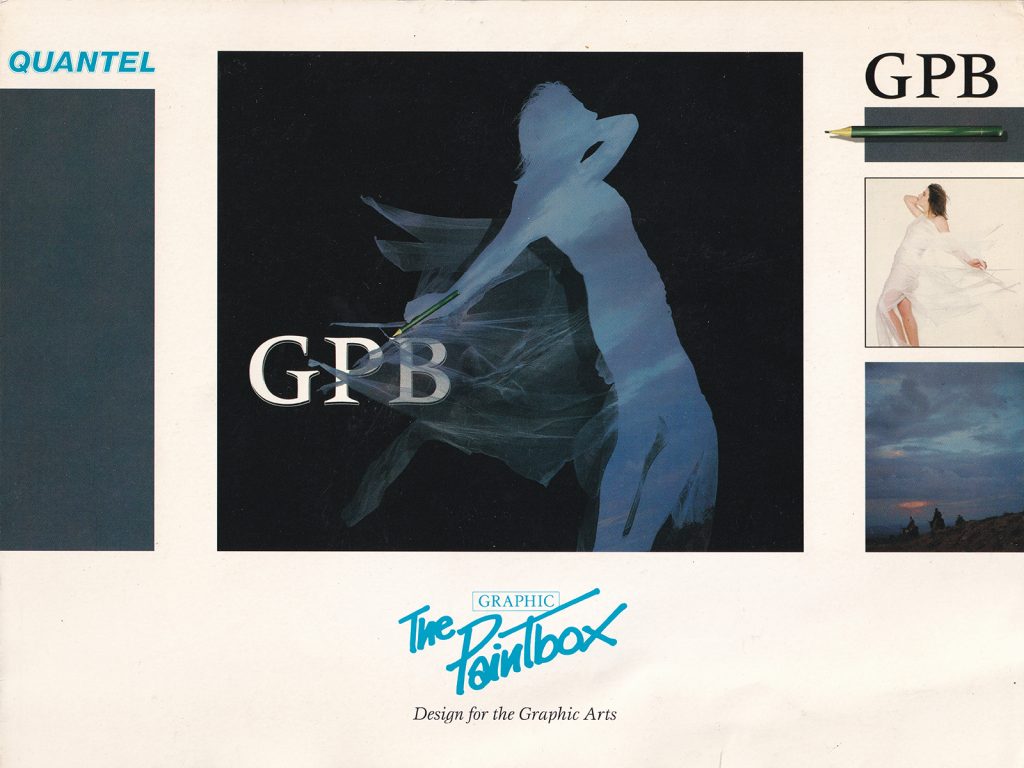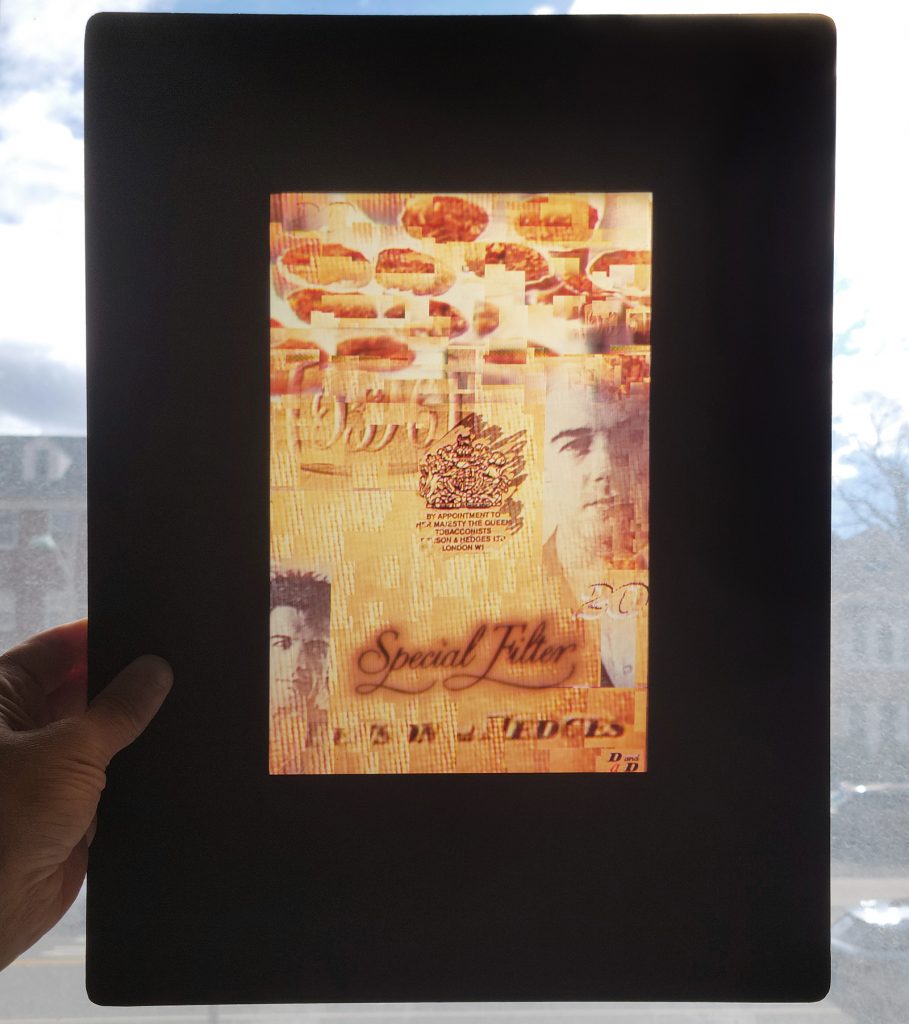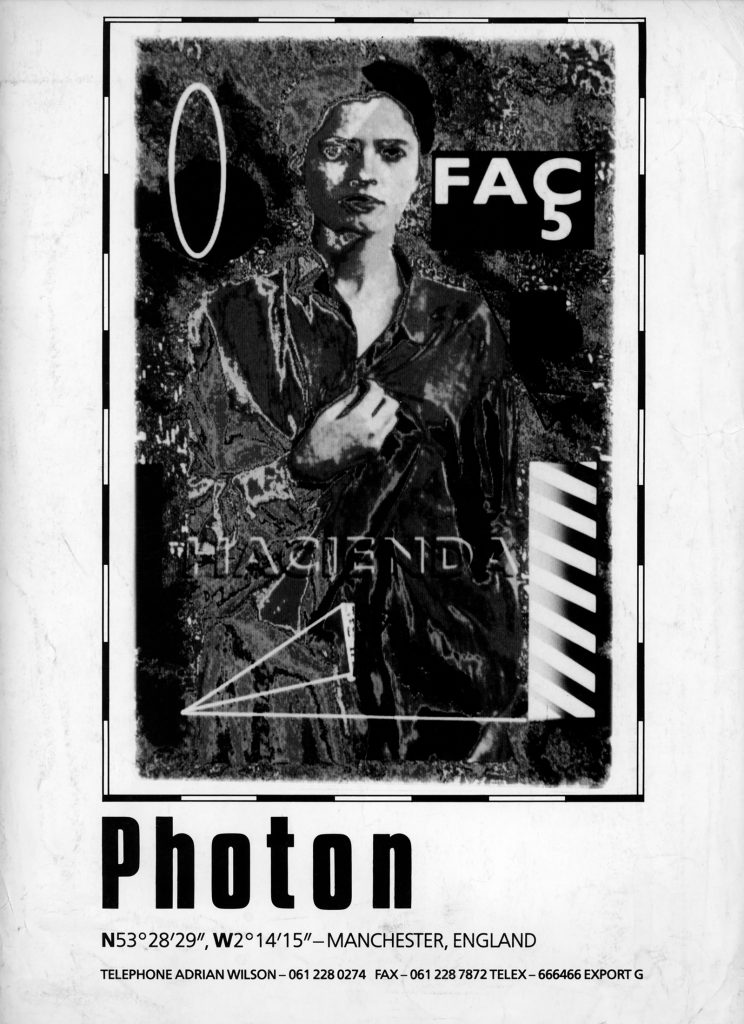
Adrian Wilson Quantel art photography exhibition Blackpool Jan-Feb 2022

Micro Arts Group Generative Microcomputer Digital Computer Art
Computer art, generative graphics and story text generators

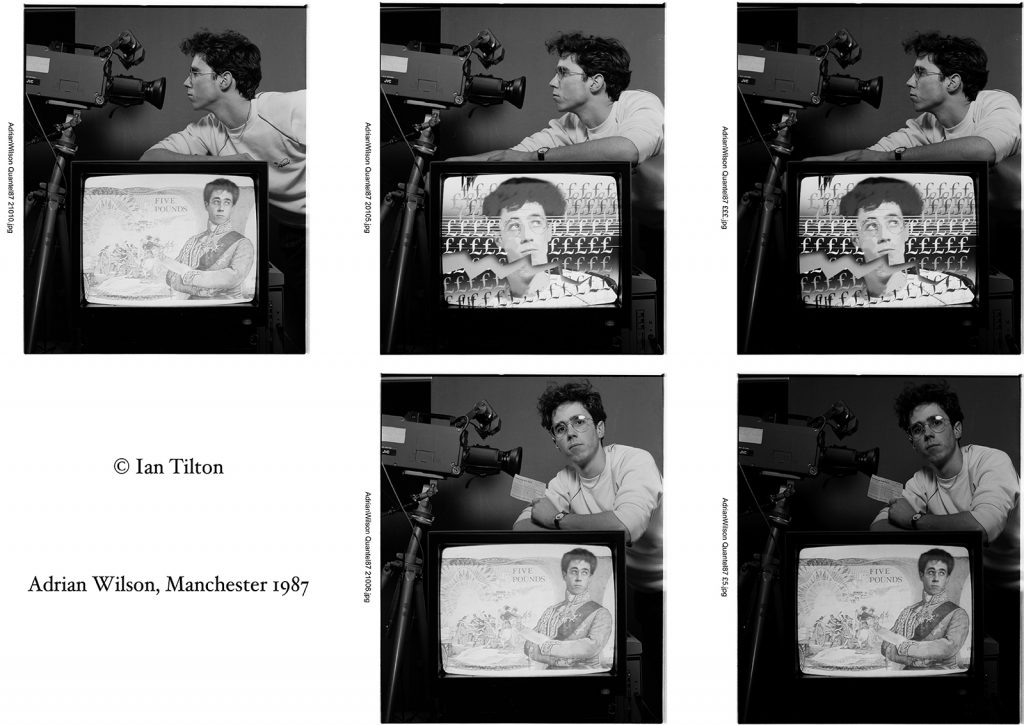
Adrian Wilson is a famous photographer and artist, and also a popular graffiti artist. We initially discussed his Quantel Paintbox work, which is recently revived. He gave me the artist’s statement below, and I followed up with some questions. There are some links through the text. In our Timeline – Early computer art – 1975 – “Quantel (British company) – created a digital framestore, which for the first time enabled TV broadcasters to combine two live videos into one digital moving image.”
This statement- November 2021
More photos at bottom of page and in the interview.
Go to Interview with Adrian Wilson
Background
Quantel was selling their revolutionary $250,000 Paintbox like hot cakes since its launch in 1981 but the tiny number of creatives who could get access to learn how to operate this rarified piece of broadcast TV equipment was a problem, which is why they donated two to share between 6 art colleges in 1986. I was in my final year as a photography student [Adrian Wilson studied HND Design (photography) from 19845-1986 at Blackpool and The Fylde College] when the Paintbox arrived with much fanfare but it was quickly and rightly dismissed for its low resolution. Students who were shooting on 10″ x 8″ film were never going to be interested in a machine which output at less than 500 lines TV screen resolution
I had no idea at the time that I was likely the first photographer in the world who was trained on and specialized in creative photographic manipulation using a digital paint system – what we now generically refer to as ‘Photoshop’. I was simply drawn to the Paintbox because I had visual ideas that I didn’t have the skill to draw as illustrations, or create in a camera or darkroom. In 1986, most photographic retouching was still done by hand and though digital companies such as Scitex were starting to emerge, their operators were retouching for print clients, not creating original pieces as artists.
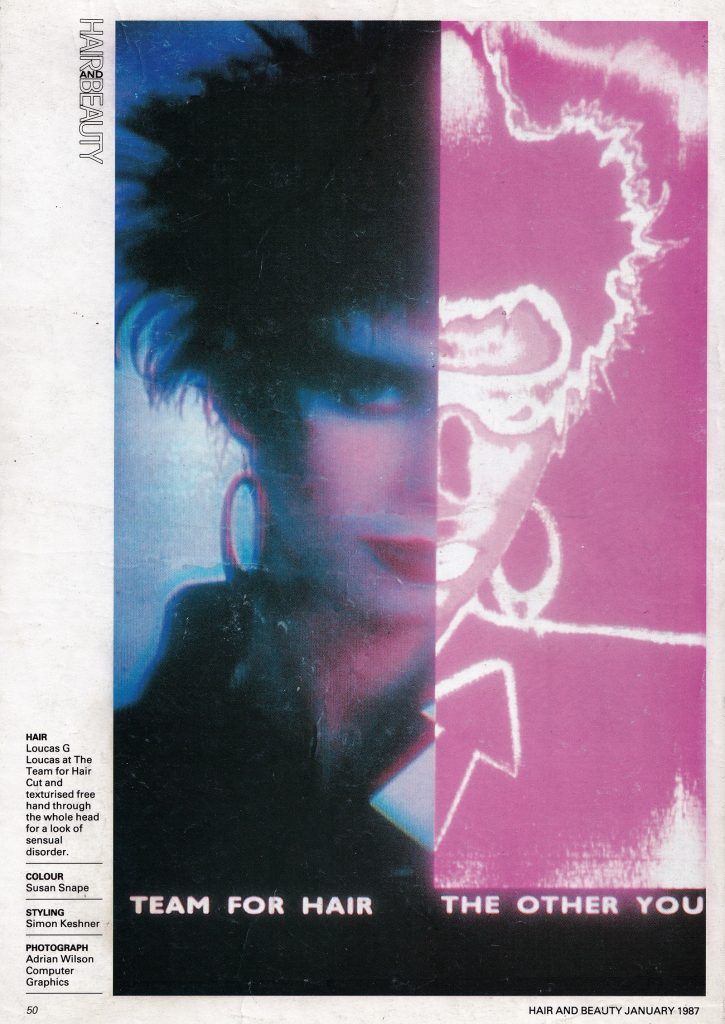
There were definitely many artists who used the Paintbox and some of them (such as Sidney Nolan on the BBC Painting With Light programme) used photographs as elements of their digital artwork but all I did was computer manipulated still photography – from taking the photograph, to digitally altering it to get the final result.
Photographer Glen Wexler described how he “was quick to embrace digital image editing starting in 1987, with access to the first Quantel Paintbox in North America…very high-end stuff.” but I think he was referring to Quantel’s new high resolution Graphic Paintbox, which used one of my images on the brochure cover.
I was always in awe of people like William Latham and probably yourself [Geoff Davis], who were more purists, and I think that age old conflict between the techies looking down on artists who didn’t understand the inner workings and the artists looking down on techies for not being creative was in full effect. It still is a rare thing for a human brain to be able to be both ordered and disordered, a creative tech, such as Alvy Ray Smith. I just enjoyed that I finally had an easy to use tool that could make my ideas a reality and I hoped that if the idea was good enough, the low resolution wouldn’t even be noticed. Someone once pointed out that nobody notices the frame around a Picasso painting, the cracks in the varnish of a Rembrandt, or the misalignment on a Warhol screen print for one good reason: The art is amazing.
Early days
I do understand that many people who commissioned or bought my work only did so because it was a new gimmick and being the first was a blessing for that but also a curse because I spent 4 years explaining the Paintbox’s features to hundreds of potential clients. Between the Paintbox at Blackpool and being offered free use of Quantel’s machines at Newbury, I was unique in having the luxury of free time to explore ideas on a machine that cost 300 pounds an hour to rent.
My work was more creatively than commercially driven, which is why I sometimes used a 24 bit true colour computer to make a black and white image if it was the right thing to do. In fact one of the pieces I had in the 1988 Art & Computers Show at Cleveland Gallery [see 1988 on Timeline] was B&W and the other was a combination of Paintbox and colour copier. I did try and be part of the Computer Arts community but it wasn’t easy before the internet and being based in Manchester.
I remember giving a talk at Camberwell art college [now part of UAL, and home of the Creative Computing Institute CCI] with other digital artists but I can find nothing about the event online. By 1990, cheaper tech meant that the Paintbox was becoming obsolete and I didn’t want to learn a new system after 4 years of struggle to make money as a digital photographer. I coincidentally gave up pretty much exactly when Photoshop 1.0 was launched, Adobe playing a big part in Quantel’s downfall with their new desktop software and legal victories breaking their lucrative monopoly. I moved into photography full time and my work sat in a box in my mum’s attic for the next 30 years but fortunately for me, it wasn’t as degrading VHS tapes, but stable Kodachrome slides and Cibachrome prints.
For background please visit https://www.tvtechnology.com/opinion/how-quantels-paintbox-revolutionized-tv-graphics-40-years-ago
Current developments
With the explosion of NFTs at the beginning of the year, a friend mentioned that people are looking for early digital work and that has set off a crazy 6 months in which I not only was told that I was probably the first to do what I did but I have been lucky enough to buy one of only 13 working Paintboxes left in the world – sold on eBay, 30 minutes from where I live!
I was invited to go on the last original Paintbox known to exist, which is being restored by Mark Nias. Amazingly, I was the first creative (Mark says he is just a tech!) to use it since it was decommissioned in 1995 but it was amazing how quickly it all came back.
Watch a video about Quantel’s resurrection here
As it is the 40th anniversary of the Quantel Paintbox launch, I have been trying to spread the word about this game changing but largely unknown piece of art history. From weather maps to pop videos, the Paintbox look was on everyone’s TV every day but like Google’s search engine, it was a big part of our lives but nobody actually physically saw it. I helped my friend, design guru Steve Heller, write this article and am doing others, such as this interview, to give the Paintbox the recognition it deserves.
Printmag video about the artistic and design uses of the Paintbox
What was cool was how a former Paintbox operator for MTV explained that American Paintbox graphics were so bad for the first few years because the US broadcast unions would only allow technicians to use them, not designers!
As my own Paintbox is working again, I have an open free invitation for any former Paintbox operator to visit my studio in NY and spend some time on it. I have also teamed up with Mark in Manchester and Matthias Paeper, who owns a Paintbox in Germany to offer the machines to post production houses who want to create that authentic retro look on the machine that actually created it.
Adrian Wilson, November 2021.
Go to Interview with Adrian Wilson
Adrian Wilson November 2021
Visit Adrian Wilson (artist) Wiki
Adrian’s art Instagram is @plannedalism and his photo one is @interiorphotography
